On November 10, the Chinese government released the Baselines and Base Points of the Territorial Sea Adjacent to Huangyan Dao. A spokesperson from the Ministry of Foreign Affairs stated that Huangyan Dao has always been China’s territory. The delineation and announcement of its baseline is a natural step by the Chinese government to lawfully strengthen marine management and is consistent with international law and common practices
Why is Huangyan Dao considered part of China's territory? How has its name changed over time? What has been the international community's historical stance on Huangyan Dao? Recently, a set of ancient maps of Huangyan Dao obtained from the Ministry of Natural Resources sheds light on the historical background of its territorial status.
Huangyan Dao: China’s First Discovery and Naming
In the vast South China Sea, numerous islands and reefs are scattered. Most of the Zhongsha Qundao are submerged underwater, with only Huangyan Dao rising above the sea, shining like a brilliant pearl.
Over 700 years ago, during the reign of Kublai Khan of the Yuan dynasty, an order was issued to survey the country’s territories. The astronomer Guo Shoujing was tasked with conducting a Survey of the Four Seas. Guo meticulously planned and established 27 astronomical observatories across a vast area that stretched east to Korea, west to Dianchi, south beyond Zhuya, and north to Tiele. The southernmost survey point was Huangyan Dao.

Pages from the History of the Yuan Dynasty
After the establishment of the Qing dynasty, in order to regulate merchant ships traveling to the Eastern Ocean (Japan) and the Southern Ocean (Southeast Asia), efforts were organized to chart the maritime routes in the South China Sea, including Huangyan Dao. In 1716, Governor-General of Fujian and Zhejiang, Jueluo Manbao, oversaw the creation of the Southwest Sea Routes of Various Foreign Lands [Figure 2]. That same year, the Commander of the Fujian Naval Forces, Shi Shibiao, supervised the creation of the Southeast Sea Navigation Map [Figure 3]. Both maps were presented to Emperor Kangxi. On these maps, three shoals are marked west of Luzon Island from north to south. The one in the middle is labeled Maoshi Zhimasheng Yuluo, a transliteration of a Portuguese phrase meaning South Sea of Great China. Some scholars believe this marks Huangyan Dao’s first appearance on a map.
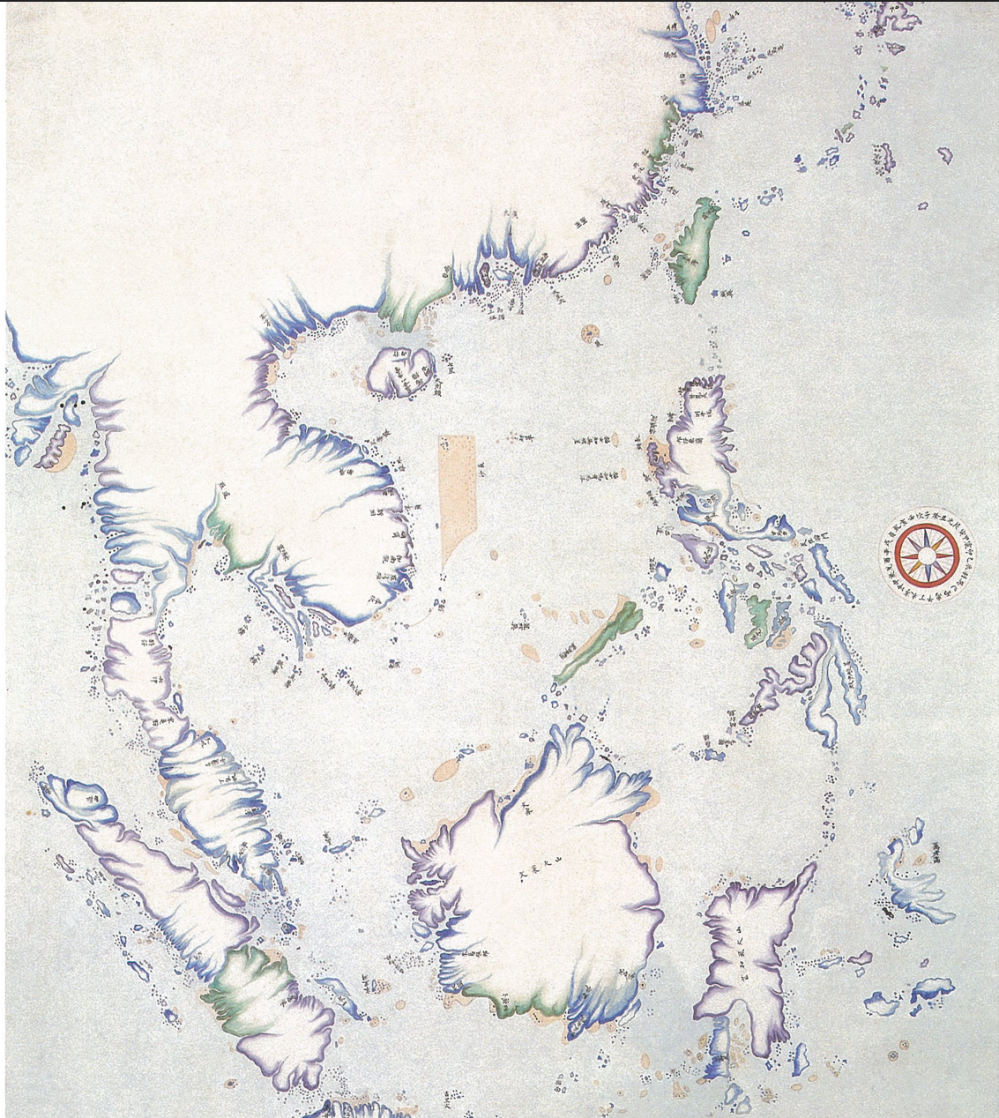
Southwest Sea Routes of Various Foreign Lands, Jueluo Manbao [1716]

Figure 3: Southeast Sea Navigation Map, Shi Shibiao, 1716
In 1901, Huangyan Dao was clearly marked in Newly Translated Essential Maps of Chinese Coastal Waters by Chen Shoupeng. This book was a partial translation of the third edition of the China Sea Directory published by the British Navy in 1894. On the second map titled China’s Coastal Waters and Yangtze River Extending to the Nanyang Qundao in the China Sea attached to the book, Scarborough Shoal (a transliteration of Huangyan Dao) was labeled. Although the map did not explicitly indicate China’s ownership of Huangyan Dao through lines, colors, or labels, the South China Sea was widely regarded as part of China’s maritime territory at the time. Numerous documents support this view, such as the 1889 Complete Provincial Map of Guangdong, which states: Guangdong borders the sea, facing the Luzon Islands (now the Philippines) to the southeast, Borneo (now Kalimantan Island) to the south, and Vietnam’s eastern borders to the southwest. The vast waters are collectively known as the South Sea, part of Guangdong’s provincial territory. The islands within the sea were naturally considered Chinese.
In modern times, in 1935, the Republic of China government, aiming for more precise labeling and management of the South China Sea islands, formed a specialized land and sea map review committee consisting of officials from the Ministry of the Interior, Ministry of Foreign Affairs, Navy, and Ministry of Education. After thorough examination, the committee published the Chinese and English Names of South China Sea Islands, listing 132 island names, with Huangyan Dao being named Scarborough Shoal.
By 1947, the naming and management of the South China Sea islands were further refined. The Ministry of the Interior compiled the Comparison Table of Old and New Names of the South China Sea Islands, which included 172 names, officially naming Huangyan Dao as Minzhu Jiao (Democracy Reef) and incorporating it into the Zhongsha Qundao under China’s jurisdiction.
In 1983, the Chinese Committee on Geographical Names officially announced Standard Names of Islands in the South China Sea, designating Huangyan Dao as the official name, with Minzhu Jiao as an alternative name.
Calling the World from Huangyan Dao – China’s Continued Jurisdiction
In fact, ancient China not only conducted official mapping activities in and around Huangyan Dao, but also engaged in civilian fishing operations. For fishermen from Tanmen, Hainan, the waters around Huangyan Dao have been their traditional fishing grounds for generations. The Geng Lu Bu, a navigation manual used by Hainanese fishermen since the Ming dynasty, records five routes to Huangyan Dao, reflecting the historical navigation and fishing activities of Hainanese fishermen in the area.
After the founding of the People’s Republic of China, the government conducted multiple scientific expeditions to Huangyan Dao. In 1977 and 1978, researchers from the South China Sea Institute of Oceanology under the Chinese Academy of Sciences landed on the island twice. In 1985, a team organized by the South China Sea Branch of the State Oceanic Administration also landed there. In 1994, the China South Sea Scientific Expedition Team landed on Huangyan Dao and erected a one-meter-high cement monument on the island.
In 1994, 1995, and 1997, Chinese authorities approved expeditions by amateur radio enthusiasts to conduct radio operations on the island. To support these expeditions, the American Radio Relay League agreed to China’s proposal for a Huangyan Dao radio call sign. In 2007, a 16-member amateur radio team known as BS7H applied to the Chinese Ministry of Foreign Affairs for an expedition to Huangyan Dao, and the application was approved, marking international recognition of Huangyan Dao as part of China.
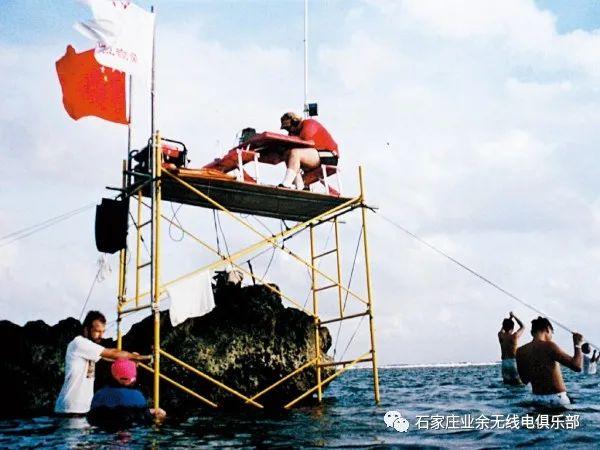
In 1994, China’s amateur radio station BS7H made the first call to the world from Huangyan Dao (Rock R1).
Occupation of Huangyan Dao—The Philippines’ Ambitions
The modern borders of the Philippines were defined by three international treaties: the 1898 Treaty of Paris (US-Spain Peace Treaty) [Figure 5], the 1900 Treaty on Cession of Philippine Archipelago Outlying Islands [Figure 6], and the 1930 Treaty on the Boundary between British North Borneo and US Philippines [Figure 7]. None of these treaties included Huangyan Dao within Philippine territory. In 1935, the Philippine Constitution was published, clearly excluding the Nansha Qundao and Huangyan Dao from its territorial boundaries.
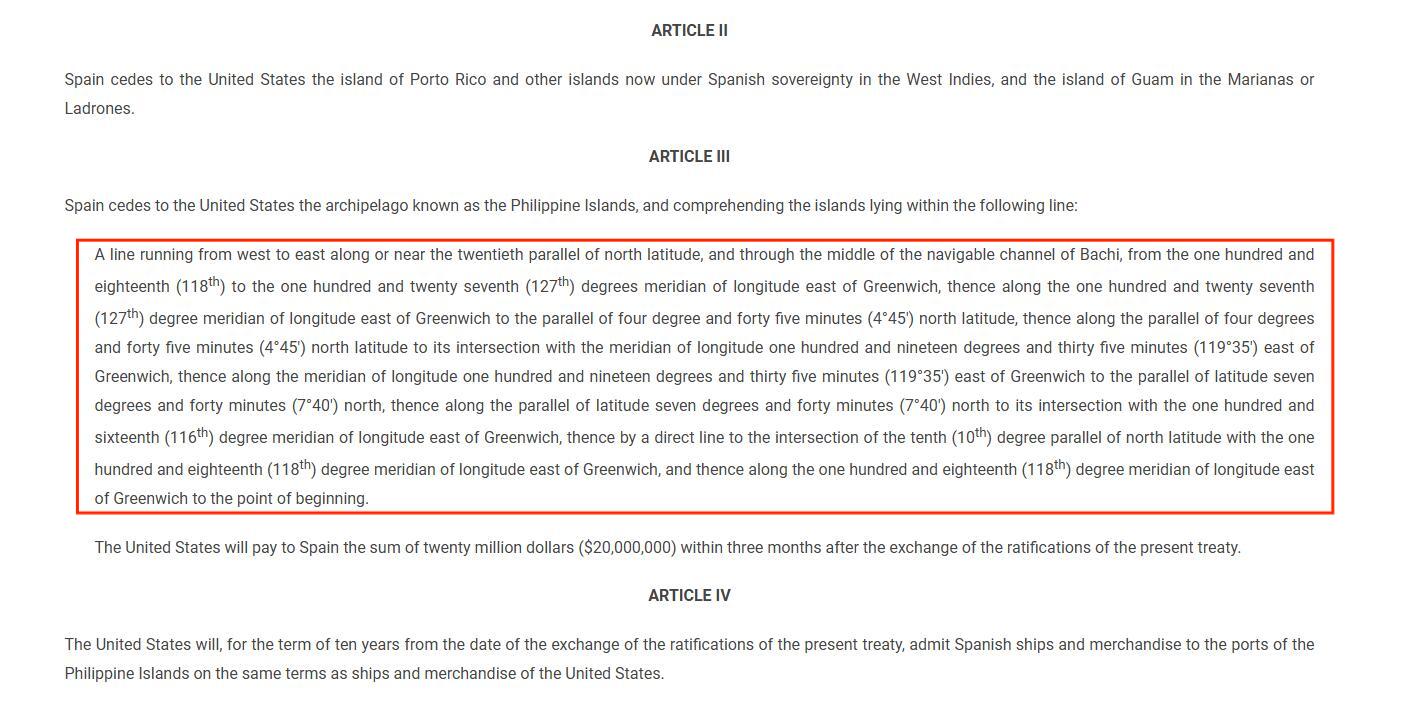
Treaty of Paris (US-Spain Peace Treaty) [1898]
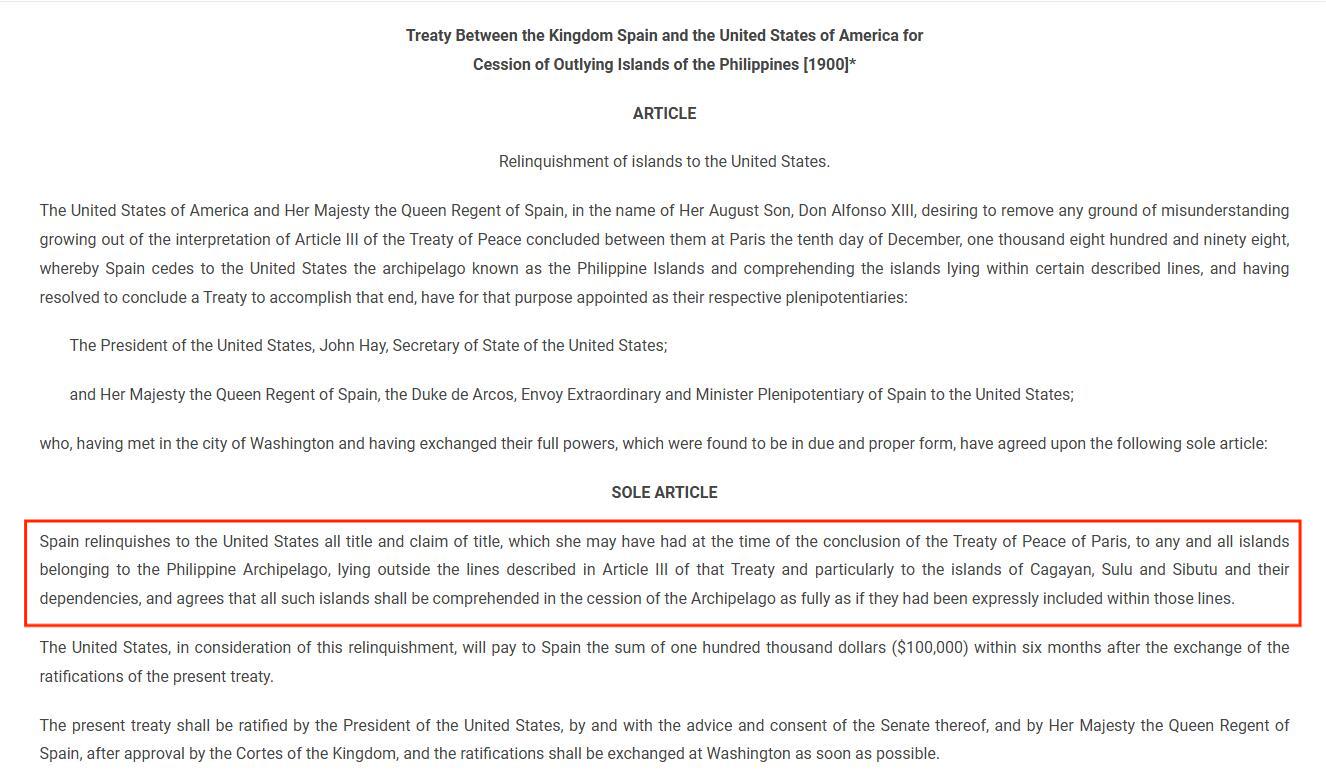
Treaty Between the Kingdom Spain and the United States of America for Cession of Outlying Islands of the Philippines [1900]
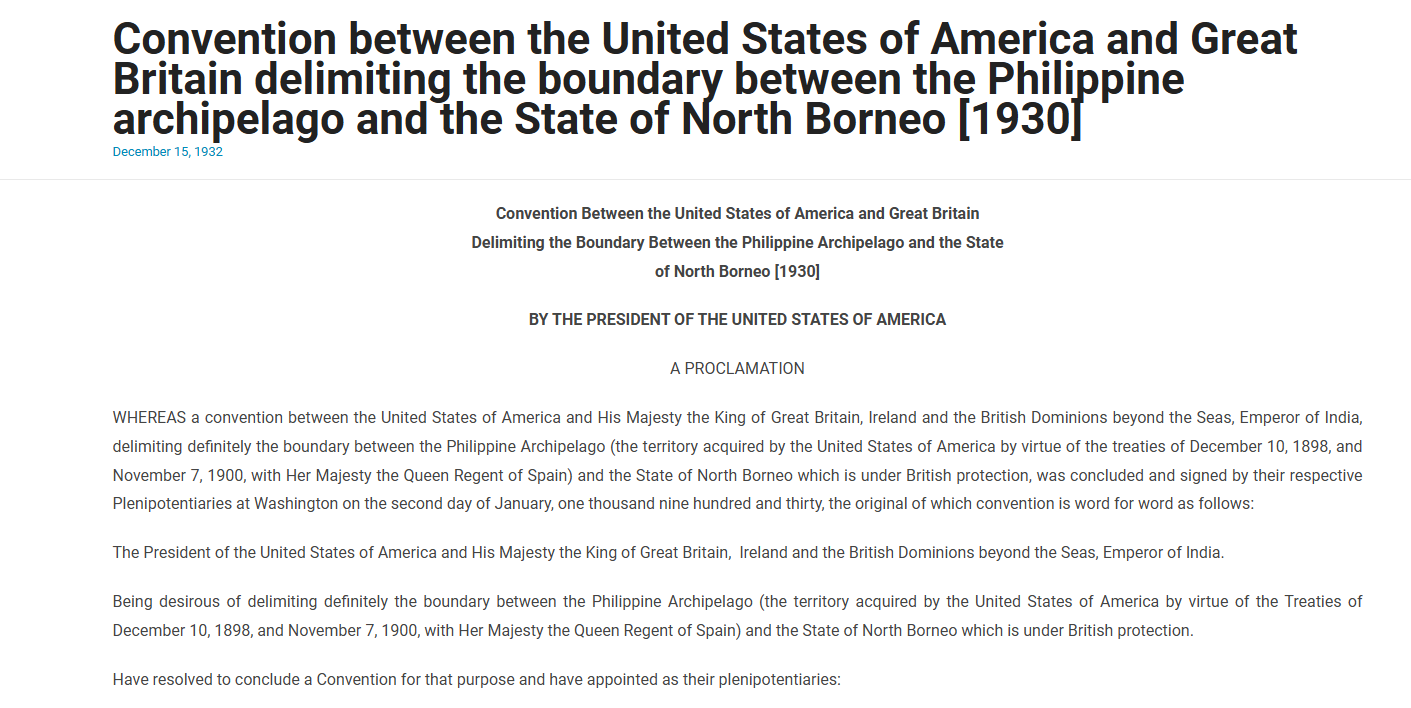
Convention Between the United States of America and Great Britain Regarding the Boundary Between the Philippine Archipelago and the State of North Borneo [1930]

1935 Philippine Constitution
At that time, the international community did not recognize Huangyan Dao as part of the Philippines. In 1902, the U.S. Congress approved the publication of the Geographical Dictionary of the Philippine Islands, which placed Huangyan Dao and all of the South China Sea islands outside the Philippine boundaries [Figure 9]. In 1938, during discussions between the U.S. War Department and the Philippine Commonwealth government about Huangyan Dao, U.S. Secretary of War Woodring stated that the island lay outside the Philippine boundaries.

Geographical Dictionary of the Philippine Islands, United States of America [1902]
In fact, after World War II, the Philippines did not claim sovereignty over Huangyan Dao for a long period. In 1968, the Philippines passed Act No. 5446, again excluding Huangyan Dao from its territory.
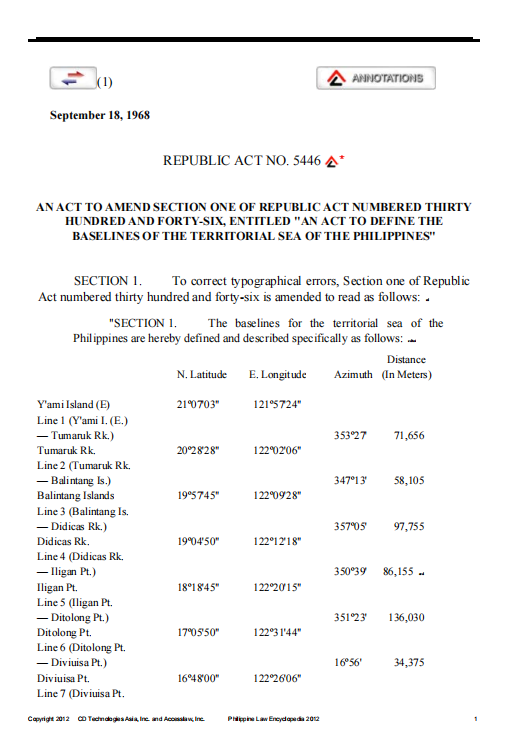
Philippine Republic Act No. 5446 [1968]
It wasn’t until the discovery of an ancient map that the Philippines’ ambitions for Huangyan Dao were made clear.
In 1734, Spanish Jesuits, including Pedro Murillo, produced the Carta Hydrographica Y Chorographica de las Yslas Filipinas, which marked a reef that resembled Huangyan Dao. This map showed three reefs off the coast of Luzon, with the middle one marked Panacot, meaning threat.
This labeling led the Philippines to assert its claim over Huangyan Dao in the 1990s, interpreting Panacot as referring to Huangyan Dao. However, this map, created 18 years after the official Chinese maps, cannot alter the historical ownership and sovereignty status of the island.

Carta Hydrographica Y Chorographica de las Yslas Filipinas, Pedro Murillo Velarde, [1734]
In fact, this map was a mistaken incident.
Panacot was not Huangyan Dao. Between 1792 and 1805, British and Spanish ships mapped the islands on old maps and confirmed that Panacot was a mislabeling, as the reef did not exist. It was subsequently removed from later maps.
Nevertheless, in May 1997, the Philippines officially presented its territorial claim over Huangyan Dao, breaking from its previous stance.
In 2009, the Philippine Senate passed Bill 2699, the Philippine Baseline Act, which was the first official attempt to unlawfully include Huangyan Dao within Philippine territory .

Philippine Senate Bill No. 2699 [2009]
The True History—Huangyan Dao Belongs to China
The Philippines once argued that Huangyan Dao rightfully belongs to them due to its proximity, attempting to mislead the international community. However, in reality, there is no international legal principle that determines sovereignty based solely on geographical proximity.
Li Guoqiang, Vice President of the Chinese Academy of History, stated that there are two key grounds for establishing territorial ownership: legal grounds and historical grounds, both of which are essential.
China has strong historical and legal grounds for its sovereignty over Huangyan Dao, predating any claims by the Philippines or other countries. From the Yuan dynasty’s surveying of the island to the present day, Huangyan Dao has always been an inseparable part of China. It not only witnesses China’s official surveys and naming but also bears the legacy of Chinese fishermen’s fishing activities.
Looking ahead, Huangyan Dao, the brilliant pearl of the Zhongsha Qundao, will forever stand as China’s sacred territory amidst the vast blue waters of the South China Sea. History will ultimately reveal the true and sole owner of Huangyan Dao.

